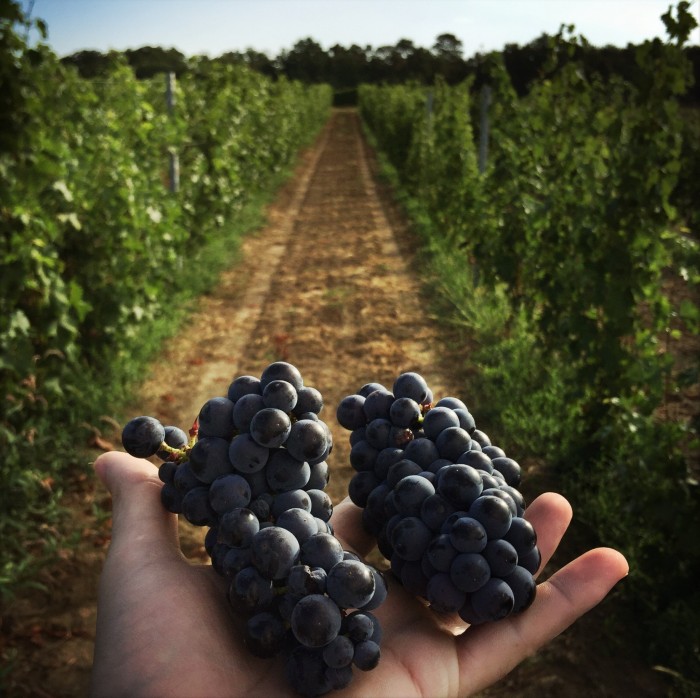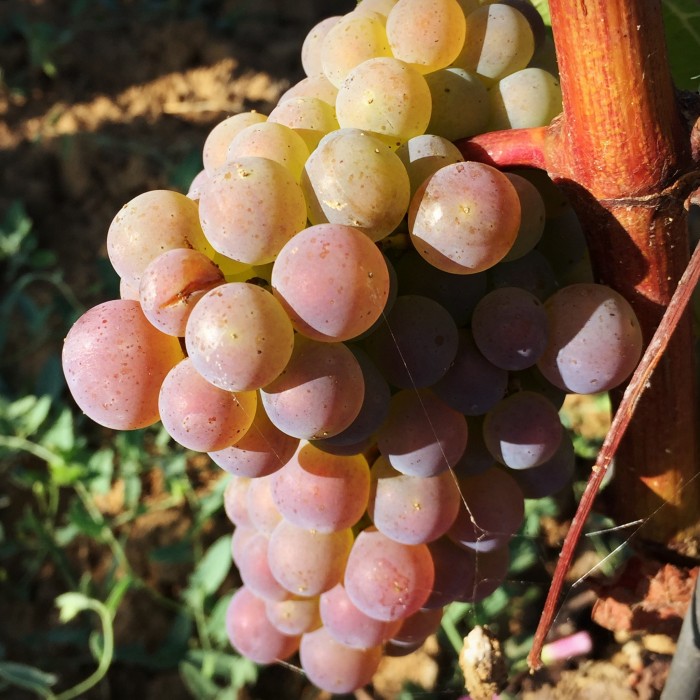

A resistant varietal is the result of cross-breeding traditional varieties with more robust ones. The resulting varietal has both the good properties of the traditional varietals and a strong natural resistance to well-known diseases such as Mildew, Odium and Botrytis.
This approach is not revolutionary, since the same procedure has taken place for generations, and led to the varietals that are grown worldwide: Merlot, Cabernet Sauvignon, Sauvignon Blanc etc.
With all the challenges that we face today – whether global warming or growing concerns over the use of chemical products in the vineyards – it is time to look for alternatives. And what could be more appropriate than starting from scratch and planting new varietals which, thanks to the understanding that we have today, might be able to enable us to adapt and ensure the sustainability of our work for future generations.
Since June 2014, we have therefore planted 3 hectares with two different resistant varietals in the heart of Entre-Deux-Mers. This experiment that is currently underway has two main objectives:
– In the vineyard: to reduce the amount of phytosanitary treatment by 50% or more for a growing cycle to find out whether these varietals can adapt themselves to the oceanic climate and the growing techniques of Bordeaux.
– In the winemaking and commercialisation: to produce quality wines and encourage our clients and distributors to discover them, to prove that it is possible to distribute and sell these new varietals in the long-term



Average annual production : 25 000 bottles
Œnologist : Jérémy Ducourt
THE WINE :
Manual harvesting in the cool, early morning
Vatting and fermentation at 26 °C for 15 days. Pumping regular and load shedding.
Maceration post fermentation at 30 °C for 10 days.
Malolactic fermentation at 18 °C
Ageing in thermo-regulated stainless steel vats
TASTING NOTES :
Colour: Deep red with a purplish tint
Nose: Spicy flavour, intense blackfruit, cassis
Mouth: Mix of power and softness with a lot of juicy ripe fruits and silky tannins
FOOD PAIRINGS :
Deli meat, aperitif, red meat, barbecue, spicy food, cheeses, chocolate dessert
Bottle Technical Sheet Wine Awards

Average annual production : 12 000 bottles
Œnologist : Jérémy Ducourt
THE WINE :
Manual harvesting in the cool, early morning
Pellicular maceration during several hours.
Cold alcoholic fermentation at the beginning (12 °C) then rise in temperature until the end (20 °C)
Ageing on lees in thermo-regulated stainless steel vats
TASTING NOTES :
Colour: Pale yellow with greenish tints
Nose: Tart flavors, fresh citrus, exotic fruits and spicy notes
Mouth: Fresh and round, highlighted by floral and citrus fruits notes
FOOD PAIRINGS :
Aperitif, fish, seafood, spicy food
Bottle Technical Sheet Wine Awards

Average annual production : 25000
Œnologist : Jérémy Ducourt
THE WINE:
Annual harvesting in the cool, early morning.
Pellicular maceration during several hours. Cold alcoholic fermentation at the beginning (12°C) then rise in temperature until the end (20°C).
Ageing on lees in thermo-regulated stainless steel vats.
TASTING NOTES:
Colour: pale yellow with golden tints
Nose: fine, balanced, fruity wine with spicy notes.
Palate: round, exotic fruit, muscat and citrus notes.
FOOD PAIRINGS:
Aperitifs, cold meats, fish and spicy dishes.
Drink chilled and young.
Bottle Technical sheet Wine Awards